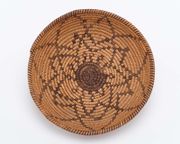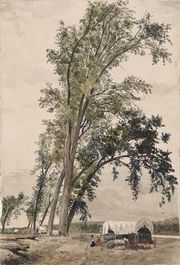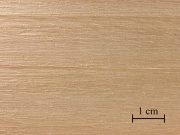Difference between revisions of "Cottonwood"
Jump to navigation
Jump to search
| Line 1: | Line 1: | ||
| − | [[File:Coiled tray MFA.jpg|thumb|Native American tray< | + | [[File:Coiled tray MFA.jpg|thumb|Native American tray<br>MFA# 1993.723]] |
[[File:Cottonwood tree MFA.jpg|thumb|Watercolor of cottonwoods<br>MFA# 50.3870]] | [[File:Cottonwood tree MFA.jpg|thumb|Watercolor of cottonwoods<br>MFA# 50.3870]] | ||
[[File:31_Cottonwood.jpg|thumb|Cottonwood (''Populus deltoides'')]] | [[File:31_Cottonwood.jpg|thumb|Cottonwood (''Populus deltoides'')]] | ||
Revision as of 12:27, 9 October 2020
Description
Any of several North American poplar trees, such as Populus deltoides. Cottonwood trees grow fast and produce a fine-grain, uniform texture wood that works easily and stains well. However, the soft, pale color wood has a tendency to warp. Cottonwood is used for millwork, musical insturments, paneling, packing boxes, paper pulp, and excelsior.
- For cottonwood fiber identification, see http://cameo.mfa.org/wiki/Category:FRIL:_Eastern_Cottonwood
Synonyms and Related Terms
Populus deltoides; choupo do Missuri (Port.)
Physical and Chemical Properties
| Density | 25-35 ppcf |
|---|
Resources and Citations
- G.S.Brady, Materials Handbook, McGraw-Hill Book Co., New York, 1971
- F. H. Titmuss, Commercial Timbers of the World, The Technical Press Ltd., London, 1965
- Michael McCann, Artist Beware, Watson-Guptill Publications, New York City, 1979
- Hardwood Manufacturers Institute, Memphis Tenn.: air-dry weight = 24 pcf
- Edward Reich, Carlton J. Siegler, Consumer Goods: How to Know and Use Them, American Book Company, New York City, 1937


